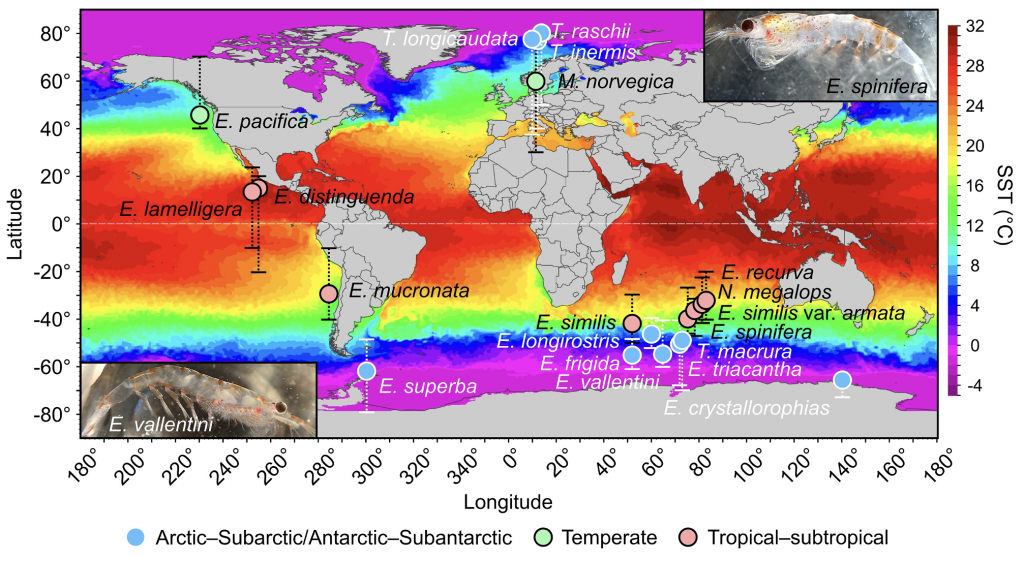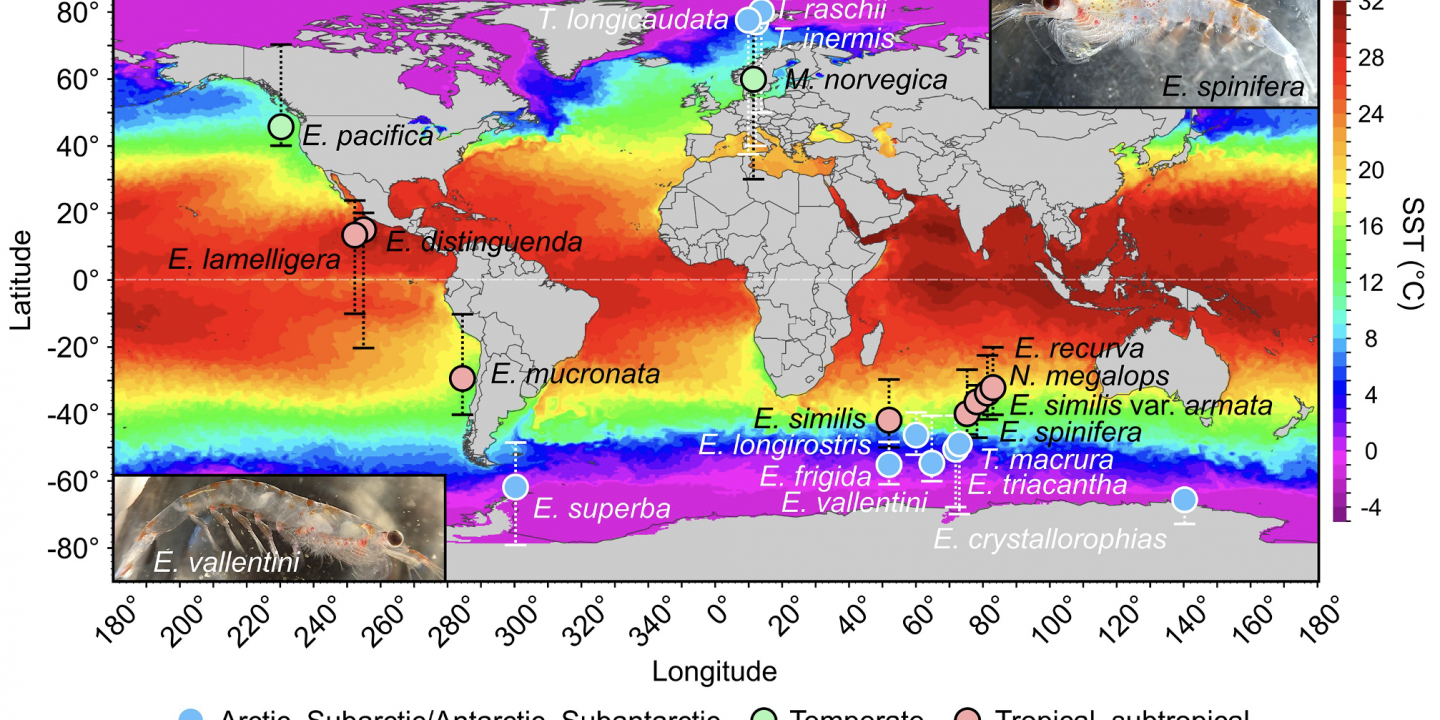Welcome to Door 11 of the 2023 Advent Calendar!
Today, we will talk about an emblematic marine zooplankton: the krill! This is the opportunity for me to introduce my latest publication: “Comparative population transcriptomics provide new insight into the evolutionary history and adaptive potential of World Ocean Krill“, released a couple of weeks ago in the journal Molecular Biology and Evolution.
Here is the link to check it out: https://doi.org/10.1093/molbev/msad225
Our world’s oceans have warmed by about 1°C in the last century, which has impacted marine life in profound and diverse ways. Among the affected species are krill, small shrimp-like creatures crucial to marine ecosystems. Krill play a vital role in marine food webs, as an important food source for larger animals, such as fish, marine mammals and marine birds. In the cold waters of the Southern Ocean where they are immensely abundant, they have evolved unique strategies to survive. However, as temperatures are rising and particularly so in polar regions, krill habitats are threatened and it is essential to understand if and how krill species will be able to adapt, so that we can predict and mitigate future consequences of climate change.
Unraveling the mysteries of krill adaptations to the environment and assessing their potential for resilience is a challenging endeavour! They live in difficult to reach habitats and it is impossible to conduct experiments in these remote and extreme regions. Moreover, krill are not easy to keep in captivity either, which prohibits attempts at conducting multigenerational experiments in a laboratory. Instead, the alternative is to dive into krill’s genetic code, studying their genes to uncover the secrets behind their ability to thrive in different environments. The approach that we used is called “comparative genomics” since we compared the genes of 20 different krill species collected through scientific cruises in different oceanic regions. We hoped to identify key genetic variants linked to thermal adaptation.

This map shows the geographic distribution of the 20 krill species surveyed in our study.
The circles indicate the sampling locations and their colour represent the thermal conditions associated with the distribution range of each species. The basin-specific latitudinal range of each species is indicated with bars. Global Sea Surface Temperature (SST) readouts are a daily snapshot from OISST V2 (2022-06-01) from ERDDAP: https://www.ncei.noaa.gov/erddap/griddap/. Photos of Indian Ocean krill collected in 2019.
We were able to identify a large set of genes seemingly involved in adaptation to the cold among Antarctic krill. Interestingly, these genes mirrored those found in Antarctic fish, revealing parallel genetic adaptations to the cold across different Antarctic taxa. Yet, the anticipated convergence with Arctic krill did not unfold as expected. Instead, we revealed unique genetic candidates for adaptation to the cold there, suggesting that Arctic and Antarctic krill species adapted to cold environments via distinct evolutionary paths.
By looking at the variety in krill genes, we could assess what tools they have at their disposal for adapting to changes in their environment. It’s like checking their survival kit to understand how well they can cope with things like climate shifts. We found that the krill species living in the Southern Ocean, such as the Antarctic krill, Euphausia superba, had lower levels of genetic variation compared to other species. This hints at a reduced potential for adaptation to change, suggesting that these krill may face challenges in swiftly adapting to the escalating climate changes.
In a world where climate change is an ever-growing threat, understanding the adaptive potential of vital species like krill is paramount. The genetic insights gained from this study not only contribute to our understanding of krill evolution but also provide a glimpse into the potential challenges these crucial zooplankton face in a rapidly changing world.
![]()
